
Surrealism - II
M. C. Escher
1898 – 1972

Maurits Cornelis Escher
(17 June 1898 – 27 March 1972) was a Dutch graphic artist who made woodcuts, lithographs, and mezzotints that used mathematics as an inspiration. Despite wide popular interest, Escher was for most of his life neglected in the art world, even in his native Netherlands. He was 70 before a retrospective exhibition was held. In the late twentieth century, he became more widely appreciated, and in the twenty-first century he has been celebrated in exhibitions around the world.
His work features mathematical objects and operations including impossible objects, explorations of infinity, reflection, symmetry, perspective, truncated and stellated polyhedra, hyperbolic geometry, and tessellations. Although Escher believed he had no mathematical ability, he interacted with the mathematicians George Pólya, Roger Penrose, Harold Coxeter and crystallographer Friedrich Haag, and conducted his own research into tessellation.
Early in his career, he drew inspiration from nature, making studies of insects, landscapes, and plants such as lichens, all of which he used as details in his artworks. He traveled in Italy and Spain, sketching buildings, townscapes, architecture and the tilings of the Alhambra and the Mezquita of Cordoba, and became steadily more interested in their mathematical structure.
Escher's art became well known among scientists and mathematicians, and in popular culture, especially after it was featured by Martin Gardner in his April 1966 Mathematical Games column in Scientific American. Apart from being used in a variety of technical papers, his work has appeared on the covers of many books and albums. He was one of the major inspirations of Douglas Hofstadter's Pulitzer Prize-winning 1979 book Gödel, Escher, Bach.

M.C. Escher's
"Drawing Hands"

Bond of Union
M.C. Escher
1956

Cube with Magic Ribbons
M.C. Escher
1957

Belvedere
M.C. Escher
1958

Fishes and Scales
M.C. Escher
1959

Waterfall
M.C. Escher
1961

Square Limit
M.C. Escher
1964

Dragon
M.C. Escher
1952
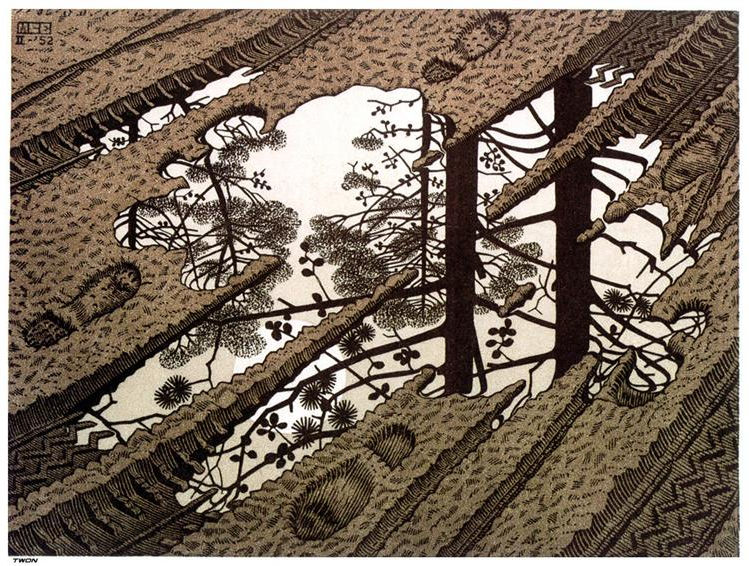
Puddle
M.C. Escher
1952
Kay Sage
1898 – 1963
Kay Sage
Katherine Linn Sage (June 25, 1898 – January 8, 1963), usually known as Kay Sage, was an American Surrealist artist and poet active between 1936 and 1963. A member of the Golden Age and Post-War periods of Surrealism, she is mostly recognized for her artistic works, which typically contain themes of an architectural nature.
Sage was born in Albany, New York, into a family made wealthy from the timber industry. Her father, Henry M. Sage, was a state assemblyman the year after her birth and later was a five-term state senator. Her mother was Anne Wheeler (Ward) Sage. Sage had an elder sister, Anne Erskine Sage.
Anne Wheeler Ward Sage left her husband and older daughter soon after Kay's birth to live and travel in Europe with Kay as her companion. She and Henry Sage divorced in 1908, but Henry Sage continued to support his ex-wife and younger daughter, and Kay visited him and his new wife in Albany occasionally and wrote him frequent letters.
Kay and her mother established a home in Rapallo, Italy, but visited many other places as well, including Paris. Katherine became fluent in French and Italian, speaking colloquial versions of these languages that she learned from the servants who helped to raise her.[6] She attended a number of schools, including the Foxcroft School in Virginia, where she became a lifelong friend of the heiress Flora Payne Whitney.
As a child she drew and wrote as hobbies, but her first formal training in painting was at the Corcoran Art School in Washington, D.C., in 1919–1920. After she and her mother went back to Italy in 1920, she studied art in Rome for several years, learning conventional techniques and styles. She particularly enjoyed painting outdoors in the Roman Campagna with teacher Oronato Carlandi and fellow students. Much later, Sage stated that "these were the happiest days of my life", and she told friend and gallery owner Julien Levy in 1961 that her campagna experience shaped her "perspective idea of distance and going away." Nonetheless, in later years Sage usually claimed that she was self-taught perhaps because, as one of her biographers, Judith Suther, states, most of what she had learned in Rome bore so little relationship to the kind of painting she eventually did that "she felt as if she had studied with no one."
Sage met a young Italian nobleman, Ranieri Bourbon del Monte Santa Maria, Prince di San Faustino, in Rome around 1923 and fell in love with him, believing at first, as she wrote to a friend in 1924, that he was "me in another form." They married on March 30, 1925. For ten years the couple lived the idle life of upper-class Italians, which Sage later described as "a stagnant swamp." She looked back on that time as years that she simply "threw away to the crows. No reason, no purpose, nothing." Her husband was content with their lifestyle, but Sage was not: as she wrote in her autobiography, China Eggs, "Some sort of inner sense in me was reserving my potentialities for something better and more constructive."

Photograph of Kay Sage and Yves Tanguy with cats, c. 1950

My Room Has Two Doors
Kay Sage
1939

A Little Later by Kay Sage, 1938

I Saw Three Cities by Kay Sage, 1944

Starlings, Caravans by Kay Sage, 1948

Other Answers by Kay Sage, 1945

The Instant by Kay Sage, 1949

A Bird in the Room by Kay Sage, 1955

The world of why by Kay Sage, 1958

Le passage by Kay Sage, 1956

Danger, Construction Ahead
Kay Sage
1940

The Fourteen Daggers
Kay Sage
1942
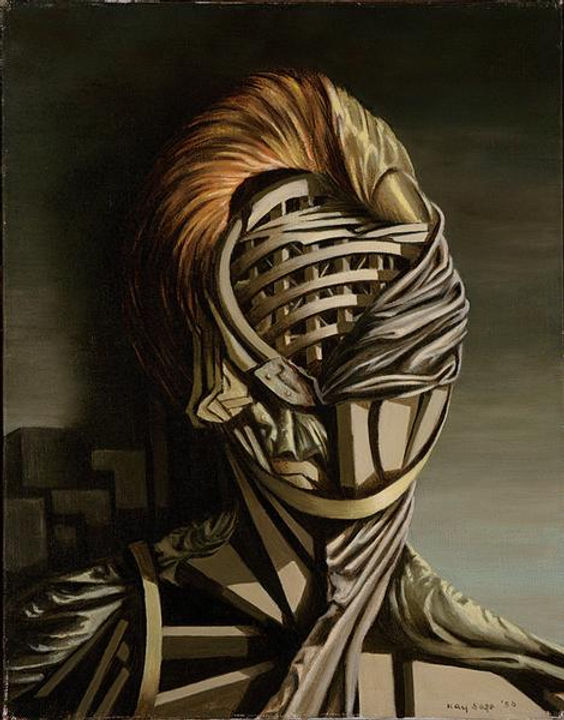
Small Portrait
Kay Sage
1950

Tomorrow Is Never
Kay Sage
1955

The Hidden Letter
Kay Sage
1943

Journey To Go
Kay Sage
1943
Rene Magritte
1898 – 1967
René Magritte
René François Ghislain Magritte (21 November 1898 – 15 August 1967) was a Belgian surrealist artist known for his depictions of familiar objects in unfamiliar, unexpected contexts, which often provoked questions about the nature and boundaries of reality and representation. His imagery has influenced pop art, minimalist art, and conceptual art.
René Magritte was born in Lessines, in the province of Hainaut, Belgium, in 1898. He was the oldest son of Léopold Magritte, a tailor and textile merchant, and Régina (née Bertinchamps), who was a milliner before she got married. Little is known about Magritte's early life. He began lessons in drawing in 1910.
On 24 February 1912, his mother committed suicide by drowning herself in the River Sambre at Châtelet. It was not her first suicide attempt. Her body was not discovered until 12 March. According to a legend, 13-year-old Magritte was present when her body was retrieved from the water, but recent research has discredited this story, which may have originated with the family nurse. Supposedly, when his mother was found, her dress was covering her face, an image that has been suggested as the source of several of Magritte's paintings in 1927–1928 of people with cloth obscuring their faces, including Les Amants.

Rene Magritte
René François Ghislain Magritte

Act of violence
Rene Magritte
1932

The Key to the Fields
Rene Magritte
1936

René Magritte,
L’Appel des cimes (The call of the peaks),
1943

The Domain of Arnheim
René Magritte
1949

Where Euclide walked
Rene Magritte
1955

Evening
René Magritte
1964

René Magritte (1898-1967)
Le monde des images

The model
Rene Magritte
1922

Three nudes in an interior
Rene Magritte
1923

The treachery of images (This is not a pipe)
Rene Magritte
1928
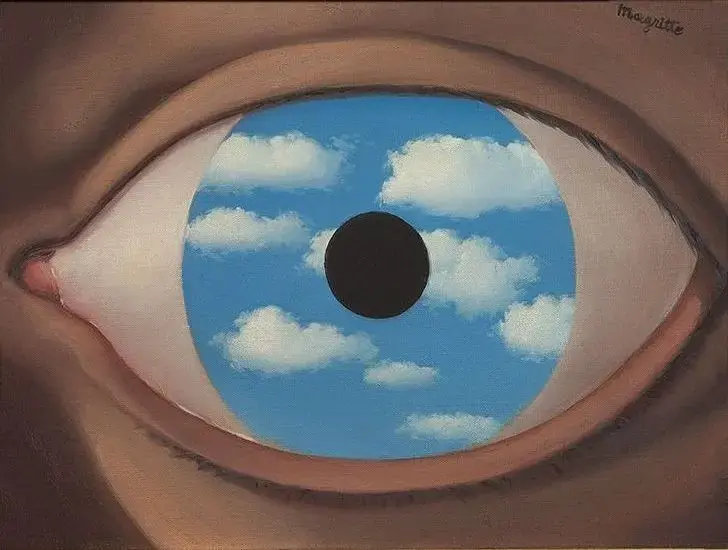
Distorting mirror
Rene Magritte
1928

The Lovers II, 1928 by Rene Magritte

The giantess
Rene Magritte
1929

Rene Magritte. The Key to Dreams. 1930

Attempt the impossible
Rene Magritte
1928

Rene Magritte. Modelo rojo
1935

Threatening weather
Rene Magritte
1929

Act of violence
Rene Magritte
1932

The light of coincidence
Rene Magritte
1933

Collective Invention
Rene Magritte
1934
_jpg!Large.jpg)
Rape
Rene Magritte
1934
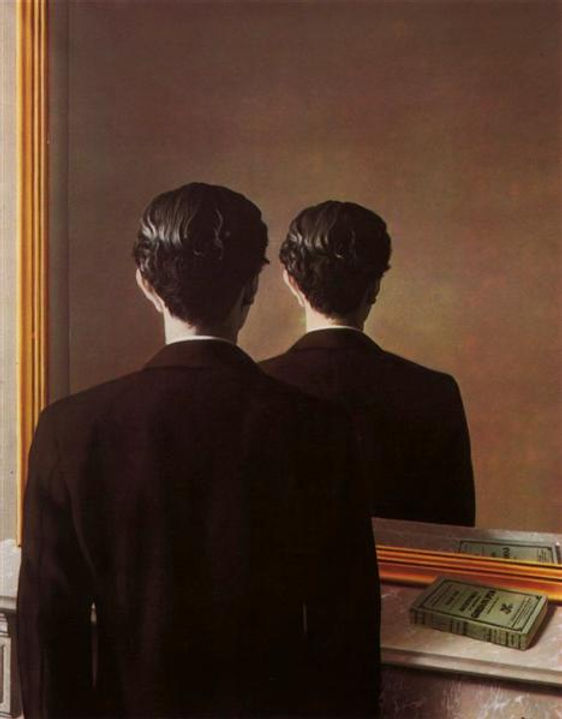
Not to be Reproduced
Rene Magritte
1937

Representation
Rene Magritte
1937

The domain of Arnheim
Rene Magritte
1938;

The marches of summer
Rene Magritte
1939

The harvest
Rene Magritte
1943

Black Magic
Rene Magritte
1945

Philosophy in the bedroom
Rene Magritte
1947

The sage's carnival
Rene Magritte
1947

Delusions of grandeur
Rene Magritte
1948
.jpg)
God's Salon
Rene Magritte
1948

Memory
Rene Magritte
1948

The ignorant fairy
Rene Magritte
1950

Golconda
Rene Magritte
1953

The Prepared Bouquet
Rene Magritte
1957

High Society
Rene Magritte
1962

The domain of Arnheim
Rene Magritte
1962

The spirit of adventure
Rene Magritte
1962

The Son of Man
Rene Magritte
1964

The Great War
Rene Magritte
1964

The blank signature
Rene Magritte
1965

When the hour strikes
Rene Magritte
1965

The Prepared Bouquet
Rene Magritte
1957
Valentine Penrose
1898 – 1978

Valentine Penrose
(née Boué; 1 January 1898 – 7 August 1978), was a French surrealist poet, author, and collagist.
Valentine Boué was born in 1898 to a military family in Mont-de-Marsan, Landes, France. The family moved to Paris when she was very young.
In 1925, she married the English artist, historian and poet Roland Penrose (1900–1984) and joined the community of surrealists based in Paris, Mougins and England. The marriage was never consummated. Valentine and her husband moved to Spain in 1936 during the Spanish Civil War. In the same year she joined the workers militia in Spain to defend the revolution. Valentine and Roland had different viewpoints on traditions in India, Eastern thought, and philosophy, which all led to a growing distance between the two. They were divorced in 1937, but met again in London during the war, after which she lived half her time with her ex-husband and his second wife, the American photojournalist Lee Miller. This arrangement continued for the rest of her life.
She joined the French Army in 1940.
She died on 7 August 1978 in Chiddingly, East Sussex, England, in the house of her ex-husband.
Penrose was an independent woman who pushed against the social expectations set on her; as a woman she was expected to be a muse and object for male surrealist artists.

Roland Penrose. Winged Domino: Portrait of Valentine Penrose nee Boue
1938
Portrait of Valentine Penrose nee Boue, Surrealist poet and Roland Penrose's first wife. He painted this portrait when their marriage was over and he thought they would not see each other again.

Valentine Penrose, collage dans Dons des féminines

Valentine Penrose, collage dans Dons des féminines

Valentine Penrose, collage dans Dons des féminines
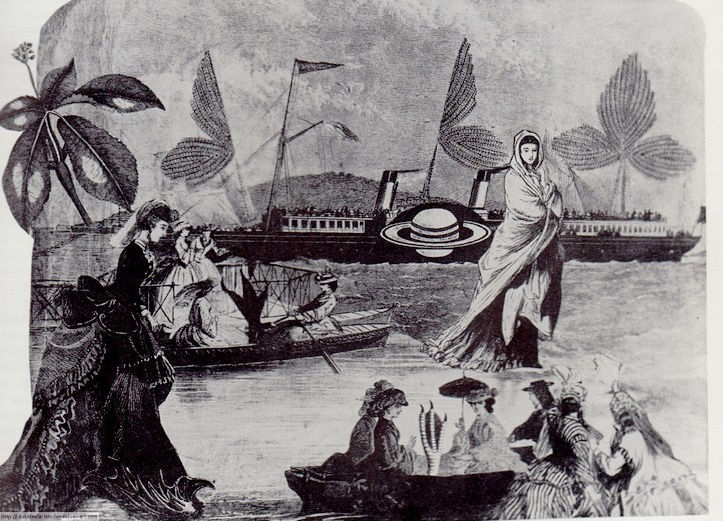
Valentine Penrose, collage dans Dons des féminines

Valentine Penrose, collage dans Dons des féminines

Valentine Penrose, collage dans Dons des féminines

Valentine Penrose, collage

Valentine Penrose La Strategie Militaire /Military Strategy (c1934, collage on paper) Penrose Collection, Sussex
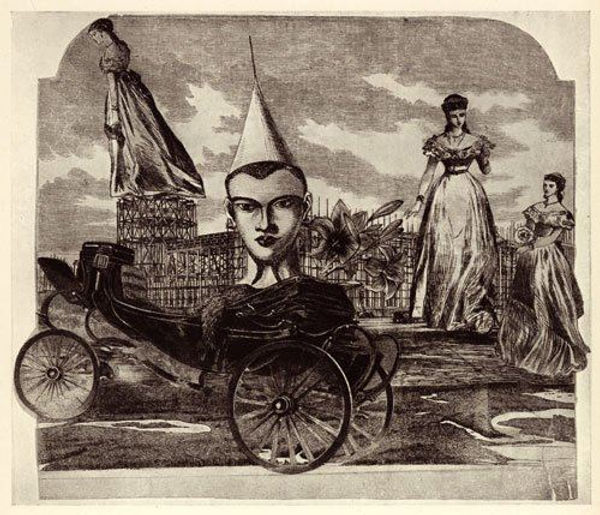
Valentine Penrose, collage

Valentine Penrose, collage
Yervand Kochar
1899 – 1979
Yervand Kochar
Yervand "Kochar" Kocharyan, also known as Ervand Kochar (1899 – 1979) was a prominent sculptor and modern artist of the twentieth century and a founder of Painting in Space art movement. The Ervand Kochar Museum is located in Yerevan, Armenia and showcases much of his work.
Kochar was born in Tiflis, Russian Empire on June 15, 1899, to Simon Kocharian of Shushi and Pheocia Martirosian. He graduated in 1918 from Nersisian School, and, between 1915 and 1918, also studied at the Arts School of the Caucasus Association for Promotion of Fine Arts (known as O. Schmerling School) in Tbilisi. From 1918 to 1919 he studied at the State Free Art Studio of Moscow. He returned to Tbilisi, where he was granted a certificate of professor of Fine Arts and Technical Studies by the People's Commissariat of the Georgian SSR.
In 1921–1922, Kochar was elected to the exhibition commission of the Union of Armenian Artists and became a member of the "HAYARTUN" (House of Armenian Art). By April 1922, he left from Batum and traveled abroad to Constantinople, then to Venice, Rome, Florence and Paris.[citation needed] Kochar's works were first exhibited in Tbilisi in 1921 and the following year in Allied-controlled Constantinople (Istanbul) and in Venice.
By 1923 Kochar had settled down in Paris, where his art was well received. In 1928 there were reported cases of vandalism towards two sculpture-paintings by Kochar in the exhibition at the Salon des Indépendants. Those works were the first heralds of "Painting in Space".
In February Dr. Alendi delivered a lecture in Sorbonne on Kochar's "new painting". Kochar's Painting in Space one-man show opened in "Van Leer" Gallery. The 15 works presented were new plastic and artistic means of expression which sought to involve time as an additional fourth dimension. The author of the catalogue was French-Polish art critic Waldemar George (1893-1970). In 1929 the international exhibition, "Panorama de L`art contemporain"("Panorama of Contemporary Art") organized in the halls of the "BONAPART" Publishers, Kochar presented the works of "Painting in Space". Among the participants of the exhibition were Georges Braque, Marc Chagall, Robert Delaunay, Henri Matisse, Francis Picabia, Pablo Picasso, Liursa, Joan Miró, Survage, Utrillo, Vlamink, and others. Kochar met Léonce Rosenberg, the well-known patron and connoisseur of modern art, who became a fan of Kochar's art. In 1936, while at the peak of his artistic fame, to the surprise of many, Kochar repatriated to the Armenian SSR, without the least bit of doubt that he was leaving Paris for good.
He was married to philologist Manik Mkrtchyan (1913–1984), with whom he had two sons, Haykaz Kochar (1946) and Ruben Kochar (1953).
He died January 22, 1979, Yerevan, Soviet Armenia.

Yervand Kochar

Yervand Kochar

Yervand Kochar

Yervand Kochar
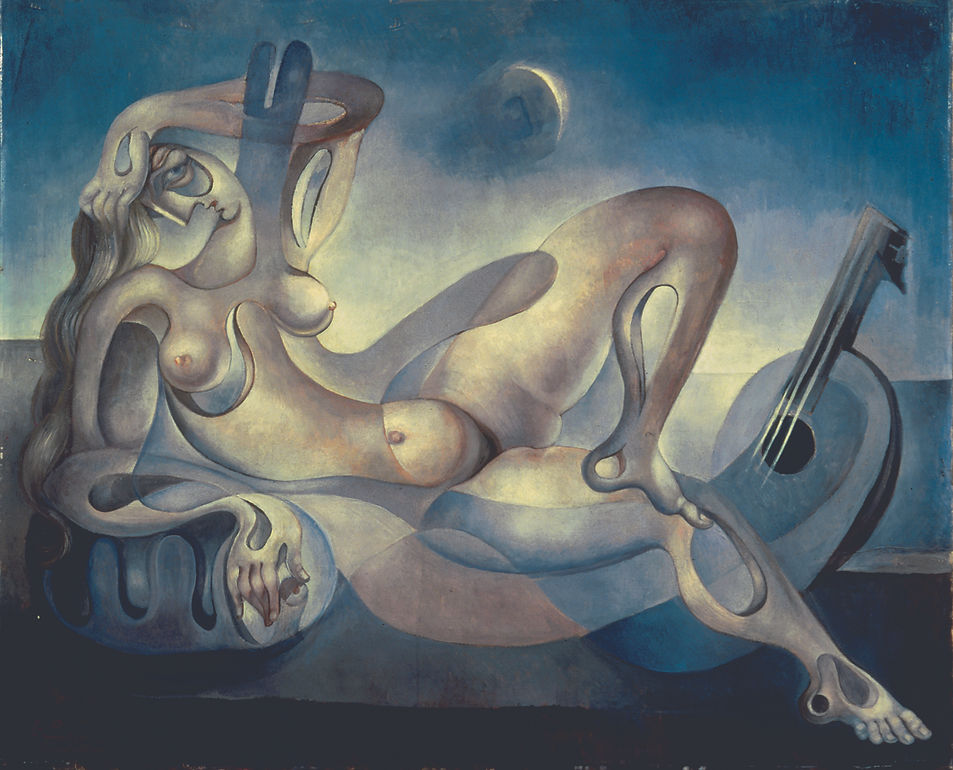
Yervand Kochar

Yervand Kochar

Yervand Kochar

Yervand Kochar

Yervand Kochar

Yervand Kochar

Yervand Kochar

Yervand Kochar

Yervand Kochar

Yervand Kochar

Yervand Kochar

Yervand Kochar

Yervand Kochar

Yervand Kochar

Yervand Kochar

Yervand Kochar

Yervand Kochar

Yervand Kochar

Yervand Kochar
DAVID OF SASUN

Yervand Kochar
DAVID OF SASUN
Yves Tanguy
1900 – 1955

Yves Tanguy
Mama, Papa is Wounded!
1927

Raymond Georges Yves Tanguy (January 5, 1900 – January 15, 1955), known as just Yves Tanguy (/ˌiːv tɒ̃ˈɡiː/, French: [iv tɑ̃ɡi]), was a French surrealist painter.
Tanguy, the son of a retired navy captain, was born January 5, 1900, at the Ministry of Naval Affairs on Place de la Concorde in Paris, France. His parents were both of Breton origin. After his father's death in 1908, his mother moved back to her native Locronan, Finistère, and he ended up spending much of his youth living with various relatives.
In 1918, Tanguy briefly joined the merchant navy before being drafted into the Army, where he befriended Jacques Prévert. At the end of his military service in 1922, he returned to Paris, where he worked various odd jobs. He stumbled upon a painting by Giorgio de Chirico and was so deeply impressed he resolved to become a painter himself in spite of his complete lack of formal training.
Tanguy had a habit of being completely absorbed by the current painting he was working on. This way of creating artwork may have been due to his very small studio which only had enough room for one wet piece.
Through his friend Prévert, in around 1924 Tanguy was introduced into the circle of surrealist artists around André Breton. Tanguy quickly began to develop his own unique painting style, giving his first solo exhibition in Paris in 1927, and marrying his first wife Jeannette Ducrocq (b. 1896, d.1977) later that same year. During this busy time of his life, Breton gave Tanguy a contract to paint 12 pieces a year. With his fixed income, he painted less and ended up creating only eight works of art for Breton.
In December 1930, at an early screening of Buñuel and Dalí's L'Age d'Or, right-wing activists went to the lobby of the cinema where the film was being screened, and destroyed art works by Dalí, Joan Miró, Man Ray, Tanguy, and others.
Throughout the 1930s, Tanguy adopted the bohemian lifestyle of the struggling artist with gusto, leading eventually to the failure of his first marriage. He had an intense affair with Peggy Guggenheim in 1938 when he went to London with his wife Jeannette Ducrocq to hang his first retrospective exhibition in Britain at her gallery Guggenheim Jeune. The exhibition was a great success and Guggenheim wrote in her autobiography that "Tanguy found himself rich for the first time in his life". She purchased his pictures Toilette de L'Air and The Sun in Its Jewel Case (Le Soleil dans son écrin) for her collection. Tanguy also painted Peggy two beautiful earrings. The affair continued in both London and Paris and only finished when Tanguy met a fellow Surrealist artist who would become his second wife.
In 1938, after seeing the work of fellow artist Kay Sage, Tanguy began a relationship which led to his second marriage. With the outbreak of World War II, Sage moved back to her native New York, and Tanguy, judged unfit for military service, followed her. He would spend the rest of his life in the United States. Sage and Tanguy were married in Reno, Nevada, on August 17, 1940. Their marriage proved durable but tense. Both drank heavily, and Tanguy assaulted Sage verbally and sometimes physically, pushing her and sometimes even threatening her with a knife privately and at social gatherings. Sage, according to friends' accounts, made no response to her husband's aggression. Toward the end of the war, the couple moved to Woodbury, Connecticut, converting an old farmhouse into an artists' studio. They spent the rest of their lives there. In 1948, he became a naturalized citizen of the United States.
In January 1955, Tanguy suffered a fatal stroke at Woodbury. His body was cremated and his ashes preserved until Sage's death in 1963. Later, his ashes were scattered by his friend Pierre Matisse on the beach at Douarnenez in his beloved Brittany, together with those of his wife.

I Came Like I Promised
Yves Tanguy
1926

Death Awaiting his Family
Yves Tanguy
1927

Phantoms
Yves Tanguy
1928

The Ribbon of Extremes
Yves Tanguy
1932

Exquisite Corpse
Yves Tanguy
1938, collage

Tomorrow
Yves Tanguy
1938

Indefined Divisibility
Yves Tanguy
1942

The Palace of Window Rocks
Yves Tanguy
1942
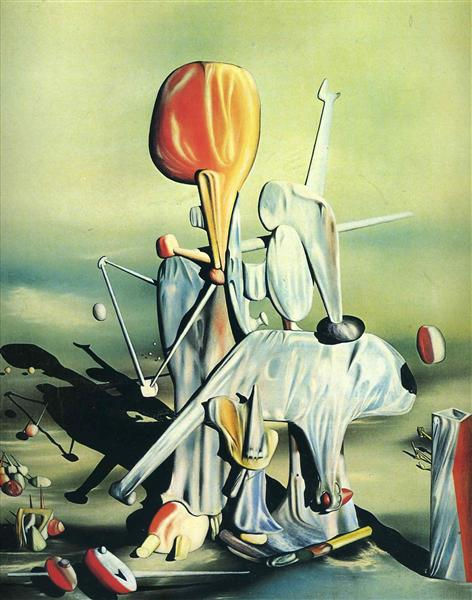
Through Birds Through Fire But Not Through Glass
Yves Tanguy
1943
Roland Penrose
1900 – 1984

Sir Roland Algernon Penrose (14 October 1900 – 23 April 1984) was an English artist, historian and poet. He was a major promoter and collector of modern art and an associate of the surrealists in the United Kingdom. During the Second World War he put his artistic skills to practical use as a teacher of camouflage.
Penrose married the poet Valentine Boué and then the photographer Lee Miller.
Penrose was the son of James Doyle Penrose (1862–1932), a successful portrait painter, and Elizabeth Josephine Peckover, the daughter of Baron Peckover, a wealthy Quaker banker. He was the third of four brothers; his older brother was the medical geneticist Lionel Penrose.
Roland grew up in a strict Quaker family in Watford and attended the Downs School, Colwall, Herefordshire, and then Leighton Park School, Reading, Berkshire. In August 1918, as a conscientious objector, he joined the Friends' Ambulance Unit, serving from September 1918 with the British Red Cross in Italy. After studying architecture at Queens' College, Cambridge, Penrose switched to painting and moved to France, where he lived from 1922 and where in 1925 he married his first wife the poet Valentine Boué.
During this period he became friends with the artists Pablo Picasso, Wolfgang Paalen and Max Ernst, who would have the strongest influence on his work and most of the leading Surrealists.
Roland Penrose.

Lee Miller.
Man Ray and Roland Penrose.
Los Angeles

Lee Miller; Roland Penrose
by Cecil Beaton

ROLAND PENROSE.
Valentine Penrose
1934
Penrose remained close to his first wife, Valentine; they met again in London during the Second World War, and she came to live with Roland and Lee Miller for eighteen months. Valentine died at Farley Farm in 1978

ROLAND PENROSE.
Lee Miller, Cote d'Azur, France
Penrose and Miller bought Farley Farm House near Chiddingly, East Sussex, in 1949, where he displayed his valuable collection of modern art, and in particular the Surrealists and works by Picasso. Penrose designed the landscaping around the house as a setting for works of modern sculpture. Farleys House is now a museum and archive open to the public for guided tours on pre-determined days.

ROLAND PENROSE.
Lee Miller

Lee Miller, Antibes,
1939.
By ROLAND PENROSE.

ROLAND PENROSE.
Lee Miller and Paul Eluard.
[French Riviera, summer 1937].

Untitled
1937
By Roland Penrose.

La Mediterranee, Etude Artistique
1937
By Roland Penrose.

La Fornarina Visits London
By Roland Penrose.

Collage
By Roland Penrose.

Collage
By Roland Penrose.

Collage
By Roland Penrose.

The Last Voyage of Captain Cook
1936
By Roland Penrose.

Bust on table, still life with shells and mirror
By Roland Penrose.

Sand Prints
1938
By Roland Penrose.

Night and Day
By Roland Penrose.

Self portrait
By Roland Penrose.

The Real Woman
By Roland Penrose.

Seeing is Believing
By Roland Penrose.

Octavia (Also entitled Aurelia)
1939
By Roland Penrose.

Good shooting (Also entitled Bien Vise)
By Roland Penrose.

First View
By Roland Penrose.

Sir Roland Penrose (1900-1984) - Artifact
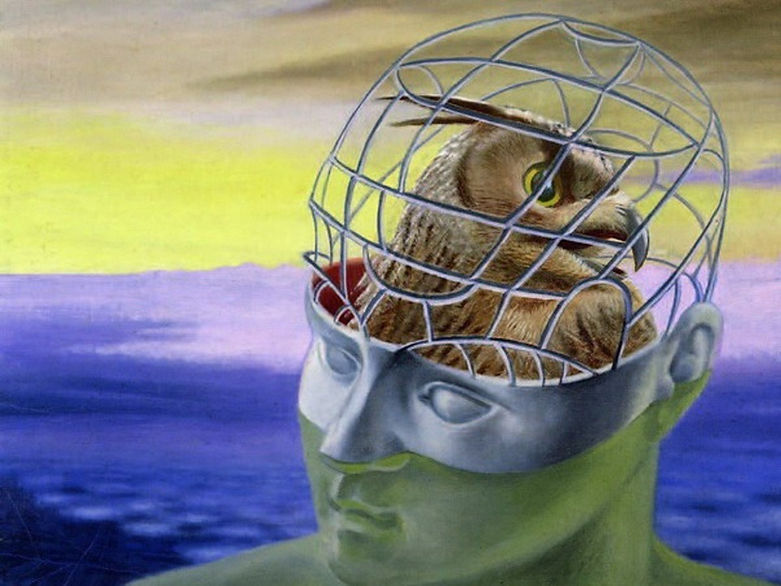
Roland Penrose - The Conquest of the Air (1939)
Pierre Molinier
1900 – 1976
Pierre Molinier
(April 13, 1900 – March 3, 1976) was a French painter, photographer and "maker of objects".
Born in Agen, France, he lived his life in Bordeaux. He began his career as a painter of landscapes until his work soon turned towards a fetishistic eroticism photography.
Molinier began to take photographs at the age of 18.
After returning from military service during 1921–1922, Molinier set out for Paris to draw from master works. Prior to Paris, he had apprenticed with his father and Pierre Augustin de Fumadelles, a sculptor. In Paris, Molinier reportedly preferred not to see too much art by the great masters as a personal manifesto on "how to create a work of art."
Moliner married Andrea Lafaye on July 7, 1931, in Bordeaux.
Molinier began a correspondence with André Breton and sent him photographs of his paintings, and was later integrated into the Surrealist group.
In 1955 Molinier made contact with the leading surrealist Andre Breton and by 1959 was showing at the International Surrealist Exhibition. At this time they defined the purpose of his art as 'for my own stimulation', indicating they future direction in one of their exhibits in the 1965 Surrealist show – a dildo.
Between 1965 and his suicide in 1976, he chronicled his exploration of his subconscious transsexual desires in "Cent Photographies Erotiques": graphically detailed images of pain and pleasure. Molinier, with the aid of a remote control switch, also began to create photographs in which he assumed the roles of dominatrix and succuba previously taken by the women of his paintings. In these black and white photographs, Molinier, either alone with doll-like mannequins or with female models, appears as a transvestite, transformed by his 'fetish' wardrobe of fishnet stockings, suspender belt, stilettos, mask and corset. In montages, an unlikely number of stockinged limbs intertwine to create the women of Molinier's paintings.

Pierre Molinier

Pierre Molinier

Pierre Molinier

Pierre Molinier

Pierre Molinier

Pierre Molinier

Pierre Molinier

Pierre Molinier

Pierre Molinier

Pierre Molinier

Pierre Molinier

Pierre Molinier

Pierre Molinier

Pierre Molinier

Pierre Molinier

Pierre Molinier
Karel Teige
1900 – 1951

Karel Teige (13 December 1900 – 1 October 1951) was a Czech modernist avant-garde artist, writer, critic and one of the most important figures of the 1920s and 1930s movement. He was a member of the Devětsil (Butterbur) movement in the 1920s and also worked as an editor and graphic designer for Devětsil's monthly magazine ReD (Revue Devětsilu). One of his major works on architecture theory is The Minimum Dwelling (1932).
Teige was born in Prague. With evidently endless energy, he introduced modern art to Prague. Devětsil-sponsored exhibitions and events brought international avant-garde figures like Le Corbusier, Man Ray, Paul Klee, Vladimir Mayakovsky, and Walter Gropius, among many others, to lecture and perform in Prague. Teige interpreted their work, sometimes literally, for the Czech audience. In his 1935 Prague lecture, André Breton paid tribute to his "perfect intellectual fellowship" with Teige and Nezval: "Constantly interpreted by Teige in the most lively way, made to undergo an all-powerful lyric thrust by Nezval, Surrealism can flatter itself that it has blossomed in Prague as it has in Paris."
Teige contributed to the 1926 book Abeceda 'Alphabet', which included a collection of poems by Nezval, one for each letter of the alphabet. The poems were set against a photomontage that Teige designed; bringing together typography and photographs. The photographs, taken by Karel Paspa, were posed images of the choreographer Milča Mayerová. Mayerová created a choreographed piece that accompanied Nezval's poems, and the photographs were stills from that piece.
Although not an architect, Teige was an articulate and knowledgeable architecture critic, an active participant in CIAM, and friends with Hannes Meyer, the second director of the Bauhaus. From 1929 to 1930 he gave guest lectures at the Bauhaus in Dessau. At the same time, he participated in the establishment of the Left Front.
Teige and Meyer both believed in a scientific, functionalist approach to architecture, grounded in Marxist principles. In 1929 he famously criticized Le Corbusier's Mundaneum project (planned for Geneva but never built) on the grounds that Corbusier had departed from rational functionalism, and was on his way to becoming a mere stylist. Teige believed that 'the only aim and scope of modern architecture is the scientific solution of exact tasks of rational construction.'
After welcoming the Soviet army as liberators, Teige was silenced by the Communist government in 1948. In 1951 he died in Prague of a heart attack, said to be a result of a ferocious Soviet press campaign against him as a 'Trotskyist degenerate,' his papers were destroyed by the secret police, and his published work was suppressed for decades.

Karel Teige

Karel Teige

Karel Teige

Karel Teige

Karel Teige
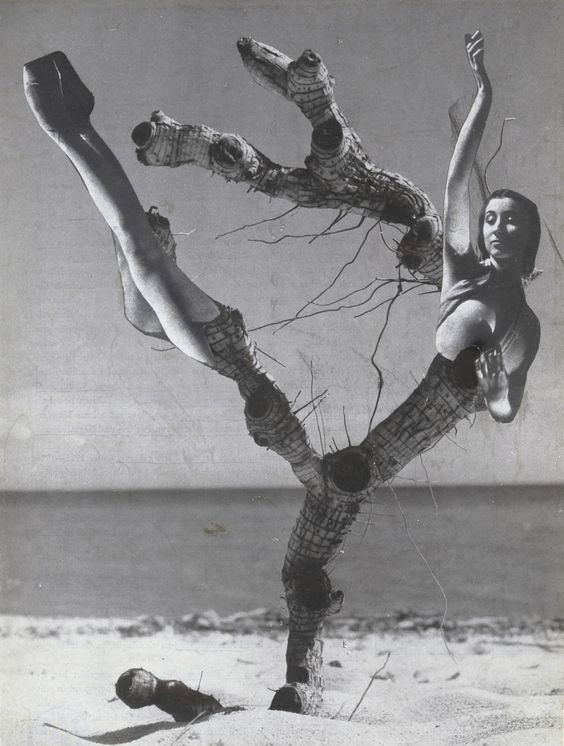
Karel Teige

Karel Teige

Karel Teige
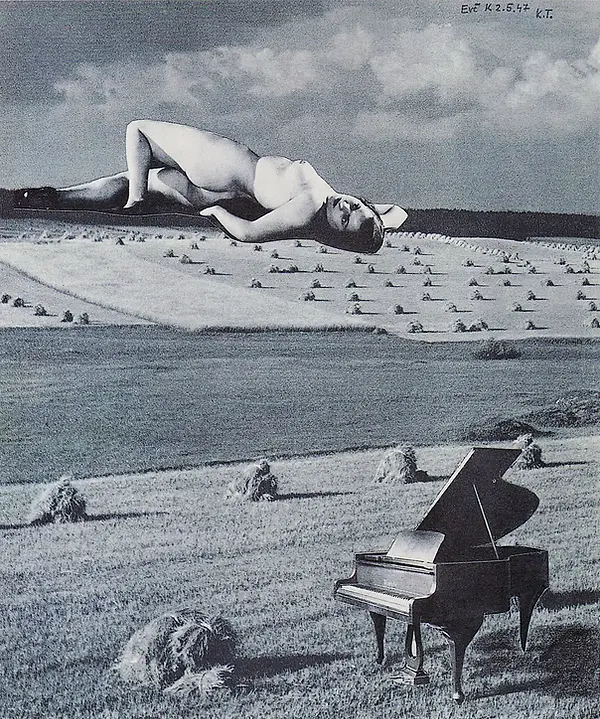
Karel Teige

Karel Teige

Karel Teige

Karel Teige
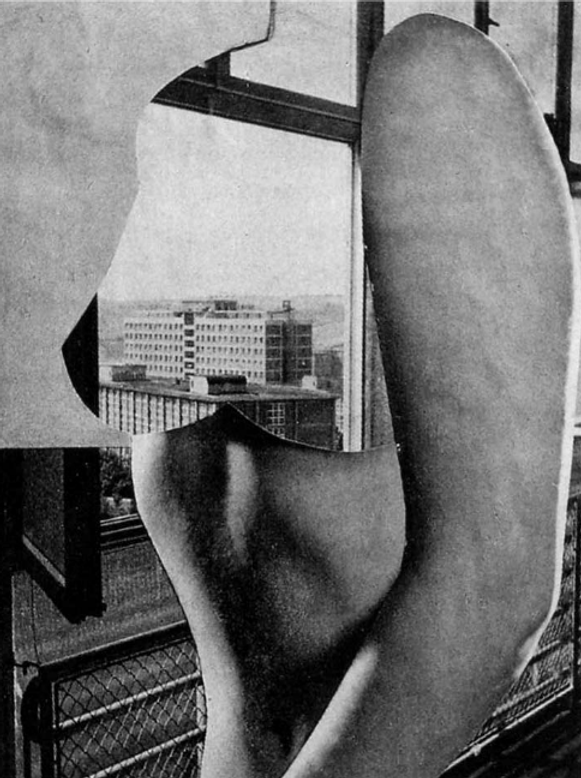
Karel Teige
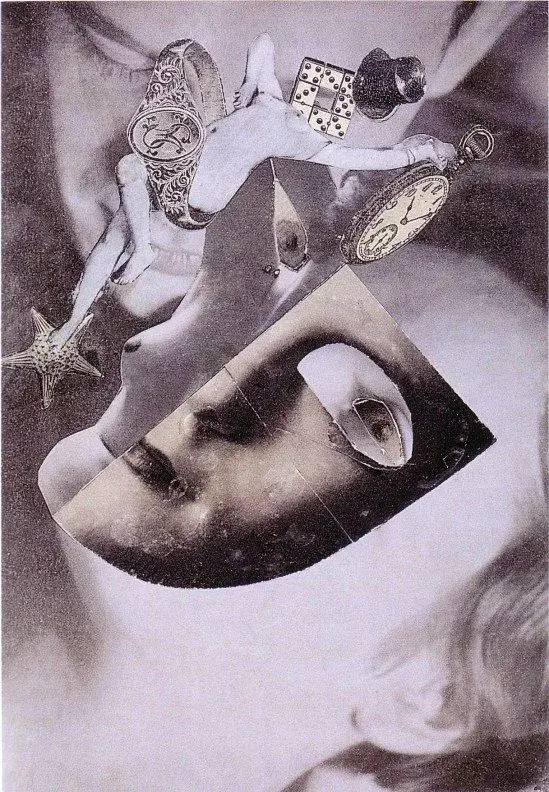
Karel Teige

Karel Teige